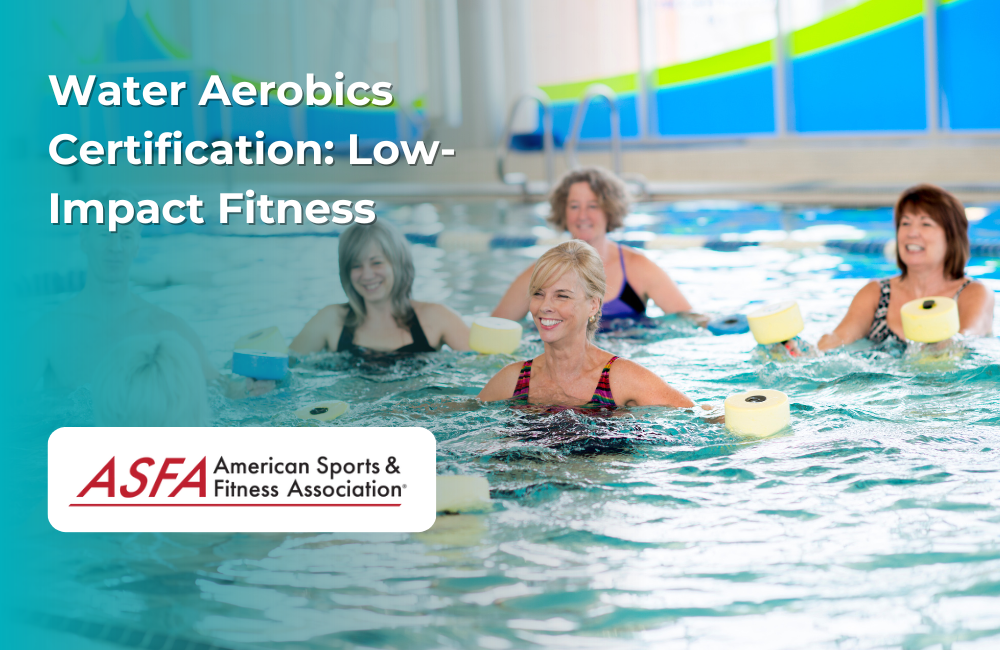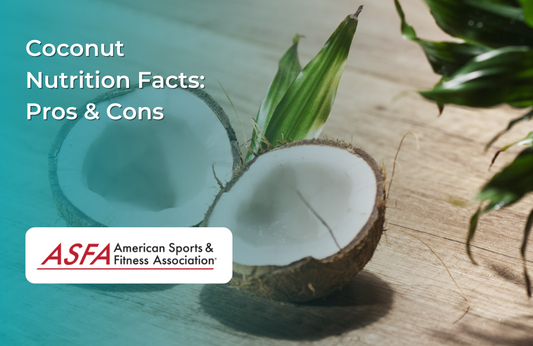Introduction
Water aerobics classes are one of the most effective and accessible forms of group fitness, typically held in a swimming pool. By using the natural resistance and buoyancy of water, these classes provide a low-impact environment that places less stress on joints, making water aerobics especially beneficial for older adults and those with joint concerns. As a type of water based exercises, water aerobics is an inclusive option for people of all ages and fitness levels, making it a versatile choice for anyone looking to improve strength, endurance, and overall health. According to Harvard Health Publishing, water aerobics offers significant health benefits and is a safe, effective workout for a wide range of individuals.
Why Water Aerobics Stands Out
What sets water aerobics apart is its adaptability. Water creates both support and resistance, making it ideal for low-impact exercise. The buoyancy of water supports the body and reduces the impact of exercising against one's own body weight, which is especially helpful for those experiencing joint pain, such as seniors, individuals with arthritis, or those recovering from injury. At the same time, the resistance of water provides an effective workout for participants seeking to build cardiovascular fitness, strength, and flexibility. This unique balance makes water aerobics one of the most versatile fitness options available.
Benefits of Water Aerobics Classes for Cardiovascular Fitness
Participating in water aerobics offers a variety of advantages:
-
Low-impact exercise that reduces strain on joints
-
Cardiovascular benefits for heart and lung health
-
Helps lower blood pressure and improve heart health
-
Effective for those looking to lose weight and burn calories
-
Engages multiple muscle groups and is excellent for strengthening muscles, which can help address muscle weakness
-
Improves cardio endurance through regular participation
-
Improved muscle tone and strength from water resistance
-
Enhanced flexibility and range of motion
-
Reduced risk of injury compared to high-impact workouts
-
Opportunities for social interaction and community support
Types of Water Aerobics Classes
Water aerobics classes come in a variety of styles, each designed to suit different fitness levels and personal preferences. Shallow water aerobics is a great starting point for beginners, as it takes place in chest-deep water, allowing for easy movement and balance while still providing the benefits of aquatic exercise. For those seeking a more challenging experience, deep water aerobics uses flotation belts to keep participants suspended, increasing the intensity and engaging the entire body for a full body workout. Aqua Zumba brings the energy of dance to the pool, combining upbeat music and dynamic movements with the natural resistance of water for a fun and effective cardiovascular fitness session. Water yoga and Pilates classes focus on gentle stretching, balance, and core strength, offering a relaxing yet effective way to improve flexibility and overall wellness. No matter your fitness level or goals, there’s a water aerobics class to help you improve cardiovascular fitness, strengthen muscles, and enjoy the unique benefits of exercising in water.
What to Expect in a Class
Water aerobics classes are typically held in shallow pools with a stable pool floor, which is important for safety and balance, making them accessible to most participants. Sessions often combine aerobic movements, resistance training, and flexibility exercises. Instructors may use equipment such as foam dumbbells, kickboards, pool noodles, and ankle weights to add variety, resistance, and support. Water shoes can provide extra grip and support during exercises. In deep water classes, a flotation belt is used to help maintain proper posture. Instructors demonstrate the correct starting position for each exercise, emphasizing proper form such as keeping palms facing forward and wrists straight for safety and effectiveness. Classes are structured to be safe, engaging, and adaptable, ensuring everyone can participate at their own pace. The appropriate water temperature is also maintained to promote comfort and muscle flexibility during class.
Water Aerobics Routines
A typical water aerobics routine is designed to provide a balanced workout that targets cardiovascular fitness, muscle strength, and flexibility. Classes often begin with a warm-up, such as walking or gentle jogging in the pool, to prepare the body for more vigorous activity. The main portion of the routine may include classic water exercises like jumping jacks, leg lifts, and arm circles, all performed in the water to take advantage of its resistance and support. Strength training elements, such as bicep curls and tricep extensions, are often incorporated using water weights or pool noodles for extra resistance, helping to build muscle strength without putting stress on the joints. Deep water exercises, like water running or treading water, offer an excellent way to boost cardiovascular fitness while minimizing impact. Each routine can be adjusted to match individual fitness levels, ensuring that everyone can progress toward their fitness goals at their own pace. With a variety of water aerobics routines available, participants can enjoy a dynamic and engaging workout every time they step into the pool.
Who Can Benefit from Water Aerobics
Water aerobics, as a form of pool exercise and water fitness classes, is suitable for a wide range of individuals, including:
-
Seniors seeking safe, effective exercise
-
People recovering from injury or with joint concerns
-
Athletes using aquatic workouts for cross-training and recovery
-
Beginners looking for an approachable entry into fitness
-
Anyone who enjoys group exercise in a supportive environment
Aqua exercise and pool workouts provide low-impact, joint-friendly options for all ages and abilities, making them ideal for older adults, those with arthritis, or anyone seeking cardiovascular, strength, and flexibility benefits in the water.
Community Pools and Fitness Centers
Many community pools and fitness centers make it easy to add aquatic exercise to your routine by offering a wide range of water aerobics classes. These classes are typically led by certified instructors who guide participants through safe and effective workouts tailored to different fitness levels. Whether you’re new to water aerobics or looking for a more advanced class, you’ll find options that match your needs and interests. Facilities often provide amenities such as warm water pools, aquatic equipment, and comfortable changing areas to enhance your experience. Joining a water aerobics class at a community pool or fitness center not only helps you stay active but also connects you with others who share your fitness goals. The group setting of an aerobics class fosters motivation, accountability, and a sense of community, making exercise both enjoyable and rewarding.
Online Resources and Virtual Classes
If you prefer the convenience of working out at home or don’t have easy access to a local pool, online resources and virtual water aerobics classes are a great alternative. Many certified instructors now offer virtual classes, allowing you to follow along with water aerobics routines from your own pool or even a local facility. Online platforms provide a wealth of resources, including instructional videos, step-by-step guides, and customizable workout plans to help you get the most out of your aquatic exercise sessions. Some services even offer virtual coaching or personalized feedback, so you can continue to improve your technique and reach your fitness goals. With online resources, you have the flexibility to exercise on your own schedule while still benefiting from expert guidance and a variety of water aerobics exercises.
Tips for Getting the Most Out of Water Aerobics
Water aerobics is a low impact workout, making it ideal for long-term participation.
To maximize the benefits of water aerobics classes, participants should:
-
Stay hydrated before and after workouts
-
Wear supportive swimwear designed for movement
-
Arrive early to adjust comfortably to the water
-
Listen to the instructor and modify movements as needed
-
Use equipment or move to deeper water for more resistance and a greater challenge
-
Commit to regular participation for long-term results
Staying Motivated
Maintaining motivation is key to achieving your fitness goals with water aerobics. Start by setting clear, realistic objectives—whether you want to improve cardiovascular fitness, build muscle strength, or simply enjoy the health benefits of regular exercise. Joining a water aerobics class or finding a workout partner can help keep you accountable and make each session more enjoyable. To prevent boredom and keep progressing, try mixing up your routines with new water aerobics exercises or increasing the intensity as your fitness level improves. Tracking your progress and celebrating small achievements can boost your confidence and commitment. Remember, the health benefits of water aerobics—such as enhanced cardiovascular fitness, greater muscle strength, and improved flexibility—are well worth the effort. Stay positive, listen to your body, and enjoy the journey toward better health in every aerobics class.
Conclusion
Water aerobics classes are a low-impact, versatile form of fitness that combines cardiovascular training, strength building, and flexibility in an enjoyable aquatic environment. By making exercise safe and accessible, these classes empower individuals of all ages to improve their health and stay active. Whether the goal is rehabilitation, performance, or general wellness, water aerobics provides a path to lasting fitness.
FAQs
What are water aerobics classes?
They are group exercise sessions held in water that combine aerobic movements, a variety of pool exercises, resistance exercises using the natural resistance of water or equipment, and pilates exercises adapted for the aquatic environment, along with flexibility training.
Why are water aerobics considered low-impact?
The buoyancy of water supports the body and reduces strain on joints, making movements gentler than on land.
Who can join water aerobics classes?
They are suitable for all fitness levels, including seniors, beginners, athletes, and individuals recovering from injury.
What benefits do water aerobics provide?
They improve cardiovascular health, muscle strength, flexibility, and overall endurance while reducing injury risks.
Do I need to know how to swim to participate?
No, most classes are held in shallow water, and swimming ability is not required to join.





